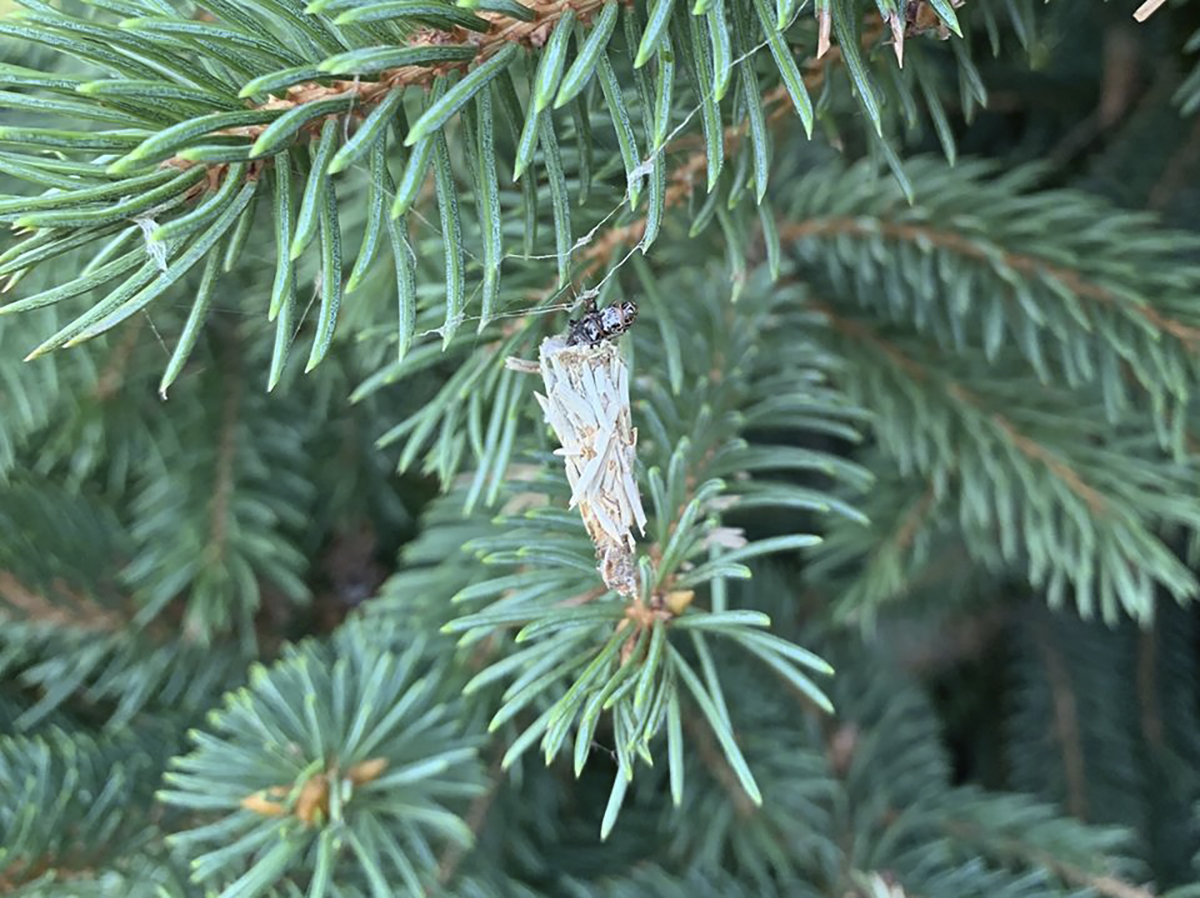
Mary Jane Frogge, Extension Associate, Lancaster County
Bagworms have become a serious pest in Lancaster County. Bagworm larvae hatched in late May and have been feeding on plant material for over a month. They are about half of their mature size.
Take a walk through your landscape or windbreak and check all your landscape plants, especially spruce and junipers. If you find an outbreak of bagworms, chemical control may be needed. Bacillus thuringiensis (Bt) is available at nurseries and garden centers as Dipel or Thuricide. Other insecticides currently labeled for bagworm control include acephate, carbaryl, cyfluthrin, malathion and permethrin. Be sure to read and follow all label directions.
If you have a large infestation in your evergreen trees or shrubs, do not delay in controlling the bagworms. Feeding by mature caterpillars slows in August before pupation into adults, so chemical control in late summer and fall is not effective. By that time, your valuable landscape plants or windbreak are already severely damaged by the maturing bagworms.